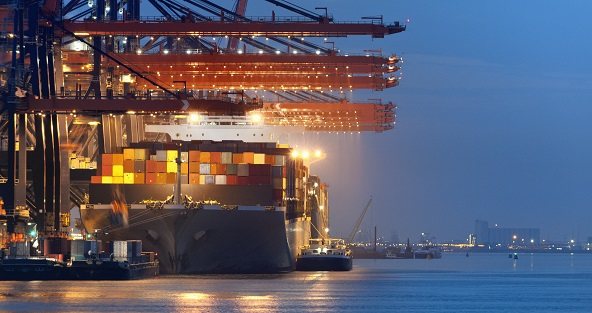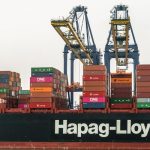A wave of new supply of liquefied natural gas is set to hit global markets late this year, making 2024 potentially the last year of robust prices in one of Australia’s major export earners before a glut causes them to dive.
The forecast from Bernstein Research – for a decline of up to as much as 47 per cent by 2027 – comes as Australia has been supplanted as the world’s biggest exporter of the fuel by the United States, and as major producers including Woodside Energy and Santos face a dip in output as gas supplies run down at older plants.
It supports findings from the federal government’s commodities forecaster that Australia is facing a decline in export earnings from LNG over the next few years from the record $92.2 billion of last financial year.
A decline in export volumes and prices in LNG would directly result in lower royalty and tax payments from gas for federal and state governments.
Bernstein said the global squeeze on gas would enter its third year in 2024, but that good news was in store for gas buyers because over 140 million tonnes a year of new LNG supply would start to hit the market from the end of the year and for the next three years, representing more than 30 per cent of the existing worldwide market.
That could be compounded by a potential end Russia’s war against Ukraine, which would drive an increase in westward Russian gas flows as part of any peace agreement, the investment bank’s analysts led by Hong Kong-based Neil Beveridge said.
But for LNG exporters which have benefited from high European and Asian spot LNG prices, 2024 could be the last year of sturdy prices as the cycle is “beginning to turn”.
Turning point
“Global LNG is approaching a turning point,” Mr Beveridge wrote in a note to the bank’s clients, foreshadowing that the LNG market will revert from being “net short” to “net long” as the new supply reaches the market between 2025 and 2027.
“While the current price environment is very favourable for LNG and gas producers, this may be the last year of supply tightness in the near term,”
Bernstein expects that while spot prices could remain “elevated” this year at between $US12 and $US14 per million British thermal units, they could plunge from $US15 to between $US8 and $US9 over the next three years.
Softer export prices could help manufacturers on Australia’s east coast, which are still struggling to source affordable gas a year after caps were imposed on wholesale prices. However, even at $US8 or $US9 per MMBtu, imported LNG would still be much more expensive than historical east coast wholesale prices in the $5-a-gigajoule range.
This year, LNG demand could be double last year’s 1.5 per cent, with Bernstein forecasting consumption will climb by 3 per cent this year to 412 million tonnes a year, primarily driven by growing gas demand in China.
“Europe has been the key demand driver over the past two years, but China looks set to pick up the pace despite a weak economy,” Bernstein said.
It noted that to achieve the Chinese government’s target for gas to reach 15 per cent of the energy mix, demand needs to show a 6-7 per cent compound annual growth rate to 600 billion cubic metres by 2030. Bernstein expects China eventually to become the world’s only 100 million tonnes-per-year market.
The looming souring of the market in LNG comes as Woodside is facing a decline in output at its 16.9 million tonnes-a-year North West Shelf venture, with one of the five production trains at the site near Karratha due to close down this year. The venture, in which BP, Chevron, Shell, Mitsubishi and Mitsui have stakes, is expected to close train 2 later this year, with chief executive Meg O’Neill last November saying the venture would be “stepping trains down over time” to suit a more constrained gas supply.
Meanwhile, production at Santos’ Darwin LNG plant was on track to have finished at the end of last year after the depletion of the Bayu-Undan gas field. The company will confirm final production at its next update. While the Darwin plant is due to be revived once the $5.8 billion Barossa gas field comes online, that project has been slowed by legal challenges, with a Federal Court decision due on January 15 on whether Santos can go ahead to build a pipeline for the project. Shell’s Prelude floating LNG plant off the far north-west coast was also offline late last year.
Adelaide-based consultancy EnergyQuest said that all those factors meant that setting a new record for Australian LNG exports would be “difficult” and that Australia’s record run in the fuel had been interrupted.
The comments come as bankers working on behalf of Woodside and Santos are this week resuming due diligence for a potential $80 billion merger after the Christmas break. Both companies confirmed in December they were in early discussions on a potential deal.
The work remains at the exchange of information stage, with queries and responses being passed between the advisers, and no decision yet on whether to move it forward to discuss valuations and potential terms, sources say.
Source: Hellenic Shipping News






